The Main Types of Tea
Tea from the Camellia sinensis bush is divided into 4 major categories: Black, Green, Oolong and White. Another popular “tea” category is Herbals, however, technically, these are not teas.
The correct term for preparations from any plant other than Camellia sinensis is Tisane, the French word for an herbal infusion. Tea is actually an herbal infusion as well, since the loose definition of an herb is ‘any useful plant’. But all other herbal infusions are called tisanes and only preparations from the Camellia sinensis tea bush are true teas.
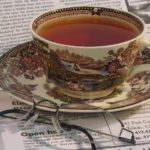 Black Teas are the most familiar teas in the western world. Black teas are fully oxidized, which is what gives them the dark brownish-black color, and doubles the caffeine content in the leaves. Generally, they contain, per cup, approximately 1/3-1/2 the caffeine of a regular cup of coffee. The manufacturing process for black teas starts with the use of rolling machines to bruise and crush the withered leaf, followed by oxidation and drying. Pu-ehr is a distinct class of black teas that are truly fermented and and have a rich, earthy flavor. They actually improve in character over time, and some aged pu-ehrs are quite valuable. Black tea infusions can vary in color from amber to bright copper to deep reddish, depending on the tea.
Black Teas are the most familiar teas in the western world. Black teas are fully oxidized, which is what gives them the dark brownish-black color, and doubles the caffeine content in the leaves. Generally, they contain, per cup, approximately 1/3-1/2 the caffeine of a regular cup of coffee. The manufacturing process for black teas starts with the use of rolling machines to bruise and crush the withered leaf, followed by oxidation and drying. Pu-ehr is a distinct class of black teas that are truly fermented and and have a rich, earthy flavor. They actually improve in character over time, and some aged pu-ehrs are quite valuable. Black tea infusions can vary in color from amber to bright copper to deep reddish, depending on the tea.
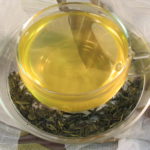 Green teas are not fermented or oxidized, and are either pan fired or steamed to prevent fermentation. They retain their natural greenish leaf color, infuse to a more yellowish-green color than black teas, and have a more herbaceous or grassy flavor. They usually contain only about 1/2 the caffeine of a regular cup of tea, so, only about 1/6-1/4 or less the caffeine in a regular cup of coffee. Green teas infuse with pale green to yellowish green in the cup.
Green teas are not fermented or oxidized, and are either pan fired or steamed to prevent fermentation. They retain their natural greenish leaf color, infuse to a more yellowish-green color than black teas, and have a more herbaceous or grassy flavor. They usually contain only about 1/2 the caffeine of a regular cup of tea, so, only about 1/6-1/4 or less the caffeine in a regular cup of coffee. Green teas infuse with pale green to yellowish green in the cup.
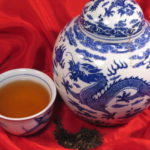 Oolongs are only partially fermented teas, ranging from 8%-85% oxidation. They can have characters closer to green (very lightly oxidized oolongs are known as Pouchongs), closer to black teas if they have been more heavily oxidized, or anywhere in between. This partial fermentation produces a greenish leaf often times with red edges. They are lighter in flavor than black teas, and typically have a flowery flavor with a hint of smoke. A good quality oolong can be infused up to 4 times, and may only need 1-2 minutes for the first steeping. In general, a good rule of thumb is to add 30 seconds more for each subsequent infusion.
Oolongs are only partially fermented teas, ranging from 8%-85% oxidation. They can have characters closer to green (very lightly oxidized oolongs are known as Pouchongs), closer to black teas if they have been more heavily oxidized, or anywhere in between. This partial fermentation produces a greenish leaf often times with red edges. They are lighter in flavor than black teas, and typically have a flowery flavor with a hint of smoke. A good quality oolong can be infused up to 4 times, and may only need 1-2 minutes for the first steeping. In general, a good rule of thumb is to add 30 seconds more for each subsequent infusion.
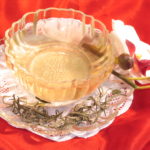 White Teas are a special class of tea which only uses the 2 tiny leaves and bud at the tip of each stem, or, in the case of a Silver Needle, only the bud. They are processed less than other teas, often by only air or sun drying and some studies show that these teas consequently retain the highest levels of antioxidants of all the teas. Other recent studies have shown that they are closer to greens in antioxidant component (especially EGCG, the most beneficial catechin compound), which is still higher than any other food or beverage you can find. Caffeine content is probably similar to that of green teas, however some sources suggest that sun drying may actually concentrate the caffeine somewhat. White teas are very delicate in flavor, and infuse to a very pale liquor. Production is much lower that other teas, and these teas are rare and usually more expensive.
White Teas are a special class of tea which only uses the 2 tiny leaves and bud at the tip of each stem, or, in the case of a Silver Needle, only the bud. They are processed less than other teas, often by only air or sun drying and some studies show that these teas consequently retain the highest levels of antioxidants of all the teas. Other recent studies have shown that they are closer to greens in antioxidant component (especially EGCG, the most beneficial catechin compound), which is still higher than any other food or beverage you can find. Caffeine content is probably similar to that of green teas, however some sources suggest that sun drying may actually concentrate the caffeine somewhat. White teas are very delicate in flavor, and infuse to a very pale liquor. Production is much lower that other teas, and these teas are rare and usually more expensive.
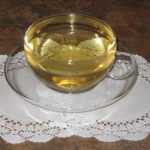 Yellow Teas: A rare class of tea we know little about in the western world. They are somewhat similar to some of the lighter green teas, but have a bit more flavor and body than the white teas. They infuse to a beautiful pale yellow cup.
Yellow Teas: A rare class of tea we know little about in the western world. They are somewhat similar to some of the lighter green teas, but have a bit more flavor and body than the white teas. They infuse to a beautiful pale yellow cup.